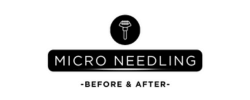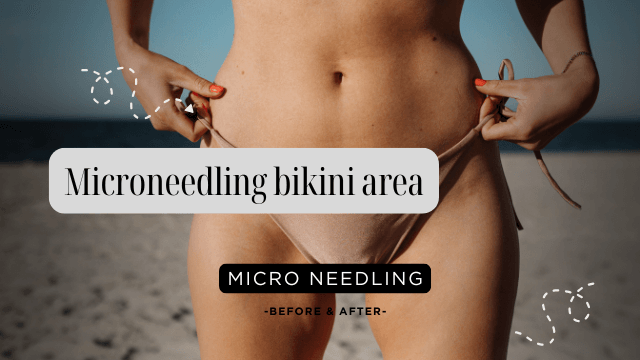Como alguien que ha explorado diversos tratamientos para el cuidado de la piel a lo largo de los años, he descubierto que la microaguja se ha convertido en una de mis soluciones preferidas para abordar problemas de la piel. Si bien mucha gente conoce la microaguja en el rostro, quería compartir mi experiencia con una aplicación menos conocida: la microaguja en la zona del bikini. Si te interesa este tratamiento para tratar la hiperpigmentación, los pelos encarnados o las estrías en la zona íntima, ¡estoy aquí para darte toda la información!
Comprensión de los conceptos básicos de la microaguja
Antes de profundizar en los detalles de los tratamientos para la zona del bikini, veamos rápidamente qué es la microaguja. El procedimiento utiliza un dispositivo con agujas diminutas y finas que crean microlesiones controladas en la piel. Estas microlesiones activan la respuesta natural de curación del cuerpo, estimulando la producción de colágeno y elastina. ¿El resultado? Una piel más suave, firme y con un tono más uniforme.
Hay varios tipos de tratamientos de microagujas disponibles:
- Microagujas tradicionales:Utiliza un rodillo de microagujas o un dispositivo tipo bolígrafo.
- Microagujas de radiofrecuencia:Combina la microaguja con la energía de radiofrecuencia para obtener mejores resultados.
- Microagujas PRP:Incorpora plasma rico en plaquetas de su propia sangre para potenciar la curación.
¿Por qué considerar la microaguja para el área del bikini?
Consideré la microaguja para la zona del bikini cuando noté problemas persistentes que no respondían a los tratamientos habituales. Aquí hay algunas preocupaciones comunes que la microaguja puede ayudar a abordar:
- Hiperpigmentación por depilación con cera o afeitado
- Pelos encarnados y manchas oscuras resultantes
- Estrías
- Flacidez de la piel después del embarazo o fluctuaciones de peso.
- Cicatrices de procedimientos anteriores
La piel de la zona del bikini suele ser más sensible que la de otras partes del cuerpo, pero sufre un traumatismo considerable debido a los métodos de depilación, la fricción de la ropa y los cambios hormonales. La microaguja ofrece un enfoque específico para estos problemas específicos.
Mi experiencia personal: qué esperar
Cuando decidí probar la microaguja en la zona del bikini, al principio estaba nerviosa. ¿Sería doloroso? ¿Valdrían la pena los resultados? Así fue mi experiencia:
Encontrar un proveedor calificado
En primer lugar, investigué a fondo a los proveedores. Esto es crucial porque Las regulaciones sobre microagujas varían según el estado.En algunos estados, los esteticistas pueden realizar la microaguja tradicional, mientras que en otros, solo profesionales médicos pueden administrar el tratamiento. Para la microaguja de radiofrecuencia o la microaguja de PRP, generalmente se requiere supervisión médica, independientemente de la ubicación.
Elegí un spa médico con un dermatólogo certificado que supervisó todos los tratamientos. Esto me dio tranquilidad sobre la seguridad y los resultados.
El procedimiento
El procedimiento en sí duró unos 45 minutos. Esto es lo que sucedió:
- La zona fue limpiada a fondo.
- Se aplicó una crema anestésica fuerte durante 30 minutos (¡esencial para la comodidad!).
- El proveedor utilizó un bolígrafo de microagujas de calidad profesional y ajustó la profundidad de la aguja según las áreas específicas a tratar.
- Después se aplicó un suero calmante.
La molestia fue mínima gracias a la crema anestésica; se sintió como un ligero rasguño en lugar de dolor. Las zonas más sensibles se trataron con agujas menos profundas.
Recuperación y resultados
Después del tratamiento, experimenté:
- Enrojecimiento similar a una quemadura solar durante aproximadamente 24 horas.
- Sensibilidad leve durante 2-3 días.
- Pequeñas costras que se formaron y cayeron naturalmente en una semana.
El El cuidado posterior fue crucial A mis resultados. Yo:
- Evitar duchas calientes, piscinas y saunas durante 72 horas.
- Aplique regularmente el suero curativo recomendado.
- Evité la ropa ajustada y las telas sintéticas durante una semana.
- Evitar la depilación en la zona tratada durante dos semanas
- Use protector solar a base de minerales con diligencia cuando esté expuesto
Después de tres sesiones separadas por un mes, noté mejoras significativas en la textura, el tono y una reducción notable en los pelos encarnados recurrentes.
Tratamiento tradicional vs. RF vs. PRP para la zona del bikini
Para mis problemas en la zona del bikini, opté primero por la microaguja tradicional y luego probé el PRP en mi tercera sesión. Aquí les dejo mi opinión sobre las diferentes opciones:
- Microagujas tradicionales Fue eficaz para mejorar la textura general y la hiperpigmentación leve.
- Microagujas de radiofrecuencia Sería ideal para problemas de flacidez de la piel, ya que la energía de radiofrecuencia proporciona beneficios de tensado adicionales.
- Microagujas PRP Me dio los resultados más espectaculares para la hiperpigmentación persistente y aceleró el tiempo de curación.
Reflexiones finales
La microaguja en la zona del bikini ha sido una experiencia revolucionaria para mí. El tratamiento ha fortalecido mi confianza al abordar problemas que antes parecían intratables. Si estás considerando este procedimiento, recuerda:
- Investigue a fondo a su proveedor y verifique las regulaciones de su estado.
- Siga meticulosamente las instrucciones de cuidados posteriores.
- Tenga paciencia: los mejores resultados se obtienen después de varias sesiones.
- Tenga en cuenta sus inquietudes específicas al elegir entre microagujas tradicionales, RF o PRP.

